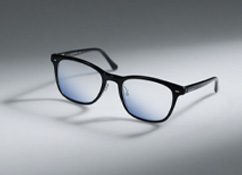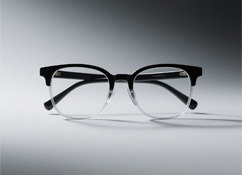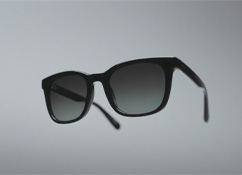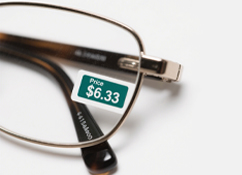From Invention to Art: Eyeglasses in 17th-Century Art History
The earliest eyeglasses popped up in the late 13th century—and it wasn’t long before they started appearing in art. From works by Tommaso Barisini to Caravaggio and El Greco, paintings began featuring people wearing glasses, offering a glimpse into how this invention shaped both daily life and artistic symbolism. Vision problems have hounded humans for centuries, especially those in precision work or who spent hours reading and writing (like monks). By the late 13th century, within these intellectual circles, the idea of fixing poor eyesight was born.
The Birth of Eyeglasses: 13th–14th Centuries
The earliest known eyeglasses likely emerged around 1286 in Pisa, Italy. We know this thanks to a 1306 Lenten sermon in Florence, which noted, “The art of making eyeglasses is less than 20 years old”—this was also the first time the Italian word for “eyeglasses” appeared in writing.
A monk named Brother Alessandro della Spina, from Pisa’s Santa Caterina Monastery (who died in 1313), is recorded as one of the first to make “occularia” (eyeglasses) and share the skill freely. By the early 1400s, eyeglasses weren’t just in Pisa and Tuscany—they’d spread. A 1300 Venetian law even banned counterfeit “eye discs” (glass fakes made to look like pricey quartz), a sign that the region’s thriving glass industry was churning out these new tools.
How Early Eyeglasses Worked (and Evolved)
The first eyeglasses were simple: two biconvex lenses (curved outward on both sides) set in frames made of wood or horn, held together with nails. They were mainly for presbyopia (age-related farsightedness) and crafted from precious materials like clear quartz or beryl glass.
Then, in 1455, Gutenberg’s printing press revolutionized reading—books got smaller, and more people read by candlelight, which strained eyes. Suddenly, eyeglasses weren’t just for monks or scholars. By 1462, even Duke Francesco Sforza of Milan was writing to Florence requesting three types: for myopia (“for the young”), presbyopia (“for the old”), and general farsightedness (“common”).
Eyeglasses kept evolving:
1730: Edward Scarlett designed the first pair that spanned the face and rested over the ears (no more holding them up!).
1756: London optician Benjamin Martin created glasses that reduced harsh light (early anti-glare!).
1783: Optometrist Addison Smith patented the first glasses with adjustable lenses—adding a second pair of lenses above the main ones for close-up work.
Eyeglasses in Art: Rare at First, Then Symbolic
For centuries, art rarely showed people wearing glasses. The first known depiction in Italian art? Tommaso Barisini’s 1352 painting for Treviso’s San Nicolò Chapel, where Cardinal de Saint-Ché is shown writing, wearing simple glasses.
Why the scarcity? Historian Michael Pasco notes in A History of Eyeglasses in Paintings that in Europe, glasses were once seen as embarrassing. Napoleon avoided them in public; Louis XVI refused myopia glasses his whole life. But in Spain, it was the opposite: By the 1500s, glasses—expensive and hard to make—became a status symbol, signaling wealth and nobility.
What Glasses Symbolized in 17th-Century Art
Medieval and Renaissance artists used glasses to send hidden messages, as historian Chiara Frugoni uncovered. They weren’t just tools—they stood for wisdom, blindness, or piety:
Caravaggio’s The Calling of St. Matthew (1599–1600): A man uses glasses to count coins, symbolizing his blindness to divine calling (focused on money, not faith).
Ludovico Carracci’s The Calling of Matthew (1605–1609): Reimagines the glasses-wearing figure as a grotesque, adding a Jewish character—playing on stereotypes of the time.
Conrad Weider’s Ecce Homo: A Jewish man in glasses stares at the Messiah in disbelief; the lenses symbolize “Jewish myopia” (a biased take on religious blindness).
Konrad von Soest’s Badewaldgen Crucifixion Altarpiece (1403): St. Peter wears primitive glasses while reading the Bible, turning them into a symbol of wisdom and learning.
More Artistic Depictions: Status, Learning, and Style
By the 1600s, glasses popped up more often:
El Greco’s Portrait of Fernando Niño de Guevara (1600) shows a cardinal in lace-trimmed glasses, signaling his high status.
A mid-1600s Portrait of Francisco de Quevedo features the poet in thick, round glasses—highlighting his intellectual persona.
Fede Galizia’s Portrait of Paolo Morigia (1592–1595) includes tiny details: the glasses reflect a window, emphasizing Morigia as a learned historian.
From Symbol to Staple
From the 1300s (Caravaggio) to modern artists like Otto Dix, glasses in art have shifted meaning: once symbols of blindness, wisdom, or wealth, they’re now one of fashion’s most beloved accessories. But their journey—from a 13th-century invention to a star in 17th-century art—proves they’ve always been more than just tools for seeing.











